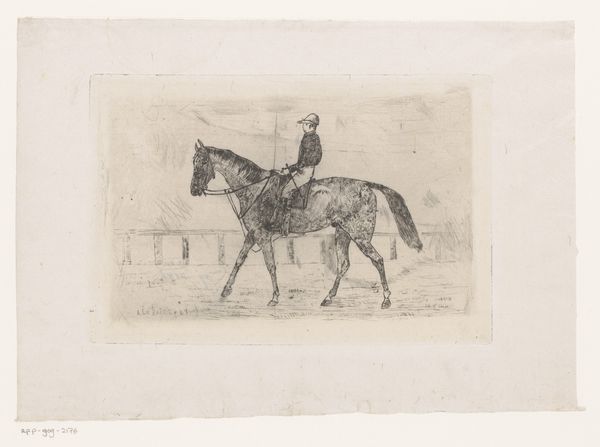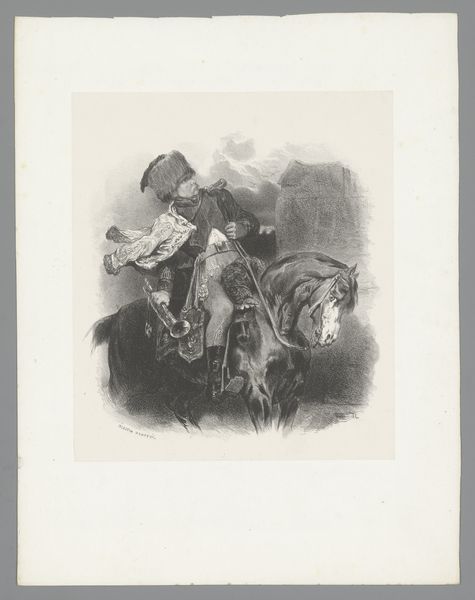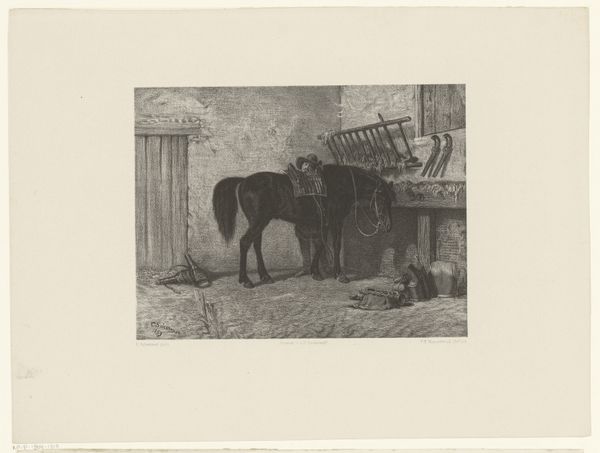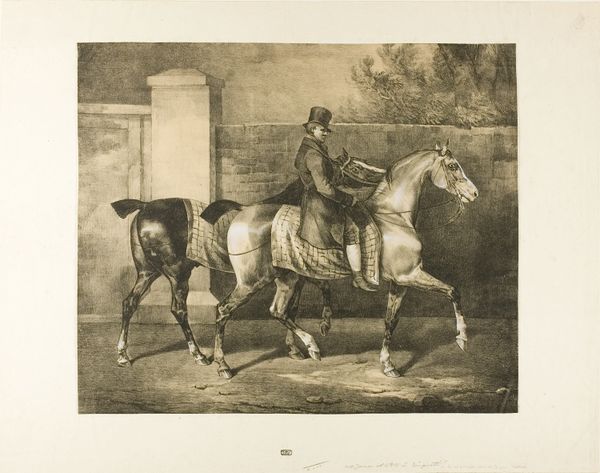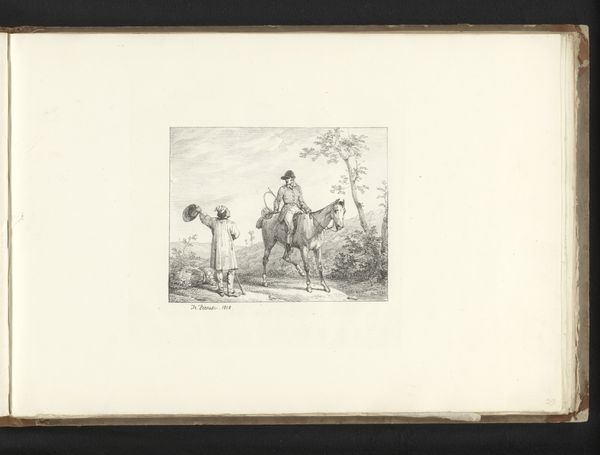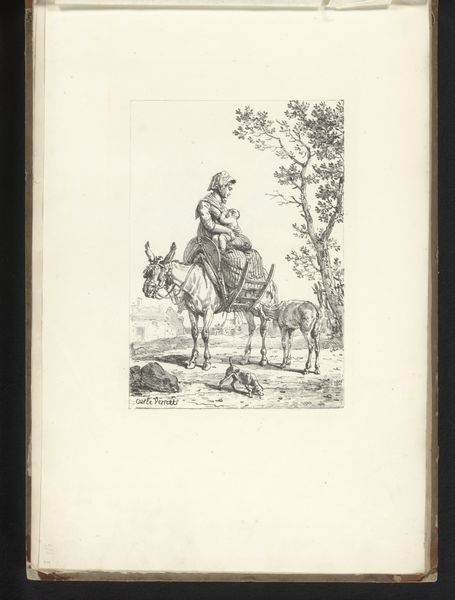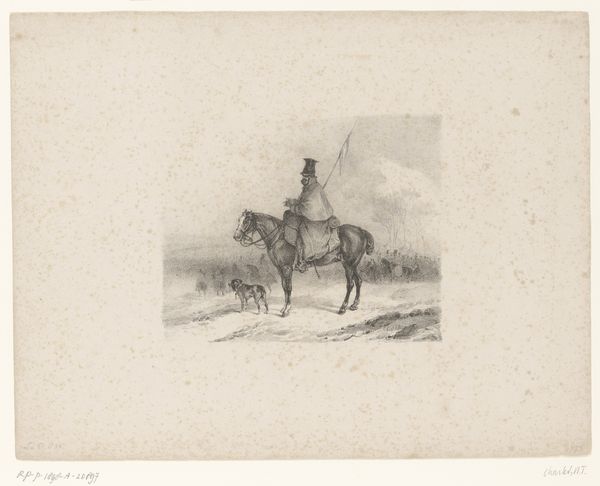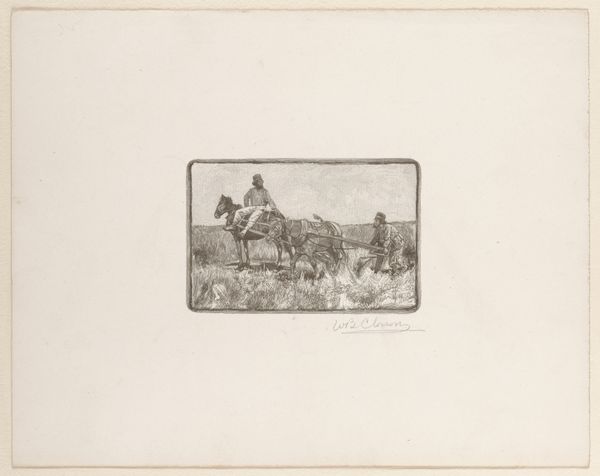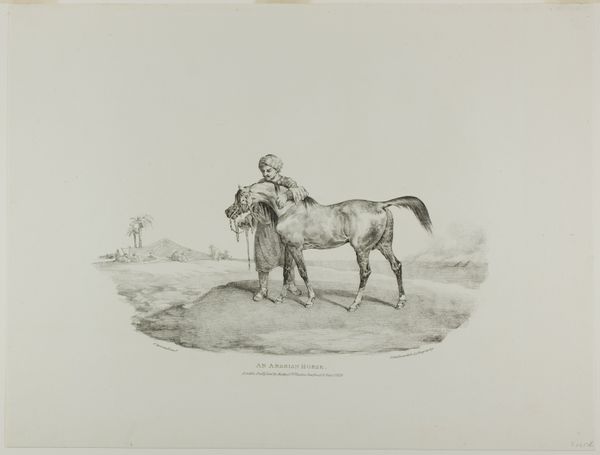
#
white colour balance
#
photo of handprinted image
#
picture layout
#
light pencil work
#
photo restoration
#
white dominant colour
#
light coloured
#
white palette
#
joyful generate happy emotion
#
child
#
horse
#
repetition of white colour
Dimensions: height 360 mm, width 261 mm
Copyright: Rijks Museum: Open Domain
This print, made by Nicolas Toussaint Charlet in the early 19th century, presents a child standing precariously on a horse's back. It's a lithograph, which is a printmaking technique using a flat stone or metal plate on which the image areas are worked using a greasy substance so that the ink will adhere to them, while the non-image areas are made ink-repellent. Charlet's choice of lithography is significant. It allowed for a more direct, painterly approach compared to traditional engraving. Look closely at the texture – the grainy quality is characteristic of the lithographic process. The image itself has a social context, with the child presented like a general on horseback. The print medium, with its relative ease of production, would have allowed for wider circulation of such imagery, potentially reaching audiences beyond the traditional art world. This democratizing aspect of printmaking is something to keep in mind, inviting us to consider how art can reflect and shape social values. By focusing on the materials and mode of production, we gain a deeper understanding of its cultural resonance.
Comments
No comments
Be the first to comment and join the conversation on the ultimate creative platform.
